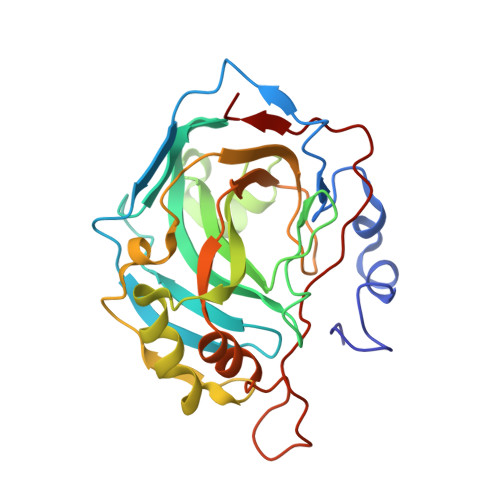Deciphering the mechanism of carbonic anhydrase inhibition with coumarins and thiocoumarins.
Maresca, A., Temperini, C., Pochet, L., Masereel, B., Scozzafava, A., Supuran, C.T.(2010) J Med Chem 53: 335-344
- PubMed: 19911821
- DOI: https://doi.org/10.1021/jm901287j
- Primary Citation of Related Structures:
5BNL - PubMed Abstract:
Coumarin derivatives were recently shown to constitute a totally new class of inhibitors of the zinc metalloenzyme carbonic anhydrase (CA, EC 4.2.1.1), being hydrolyzed within the CA active site to 2-hydroxycinnamic acids. We explore here a new series of variously substituted coumarins and a thiocoumarin for their interaction with 13 mammalian CA isoforms, detecting low nanomolar and isoform selective inhibitors. The mechanism of action of this class of inhibitors is delineated in detail by resolving the X-ray crystal structure of CA II in complex with trans-2-hydroxy-cinnamic acid, the in situ hydrolysis product of simple coumarin. Thiocoumarins also act as efficient CAIs, similarly to coumarins. The versatility of the (thio)coumarin chemistry, the cis-trans isomerization evidenced here, and easy derivatization of the (thio)coumarin rings, coupled with the nanomolar inhibition range of several isozymes, afford isoform-selective CAIs with various biomedical applications, which render these classes of compounds superior to the clinically used sulfonamides.
Organizational Affiliation:
Universita degli Studi di Firenze, Laboratorio di Chimica Bioinorganica, Rm. 188, Via della Lastruccia 3, I-50019 Sesto Fiorentino (Firenze), Italy.

















